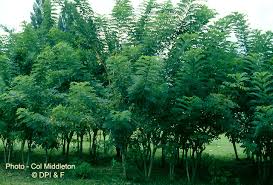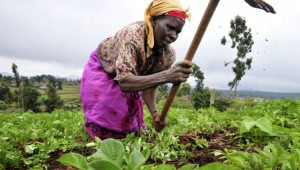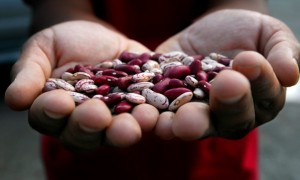ESTHER MSETEKA, Lusaka Community Markets for Conservation (COMACO), an agro-processing company , is supporting the cultivation of Gliricidia, a “wonder” tree that can be intercropped with other plants.
COMACO, which focusses agroprocessing in Eastern Province, has planted over 10 million Gliricidia sepium seedlings between December 2015 and February 2015 to help small-scale farmers reduce their dependence on chemical fertilisers.
COMACO says in a statement issued to the Daily Mail on Monday that Gliricidia was introduced after a study showed the benefits the tree has on crops.
“The trees are planted in rows about five metres apart and rows of food crops are planted in between. “Despite the work involved in raising tree nurseries, which often requires farmers to build their own wells to irrigate the seedlings as they grow in readiness for transplanting, the investment in labour seems to be paying off as more farmers witness the benefits outweigh the costs,” it says.
The study showed that farming with Gliricidia provides an annual cover of nitrogen-rich leaves as protection when farmers cut the stems to open the fields to sunlight at the time of planting.
Category Archives: Blog
Female-friendly agricultural technologies and innovations are needed to bridge the gender gap in agricultural productivity and food security.
A forum dubbed Empowering women for sustainable natural resource management, which was held in Kenya last month (3 March), noted that there are challenges and opportunities that exist in promoting gender equality in Africa, adding that policy and institutional interventions are needed to enhance women participation in environmental management.
Speakers at the forum said that women find it difficult to apply and use some agricultural technologies and innovations because of their technical and labour-intensive designs, noting that most are geared to commercial farmer and not smallholder farmers, most of whom are women.
“For instance, the briquette machine that sought to ease women’s energy needs and the MoneyMaker technology for irrigation require a lot of physical strength to use, [thus] disadvantaging women ,” said Annabel Waititu, the executive director of the Institute of Environment and Water Management in Kenya.
Aisha Karanja, the executive director of Kenya-based Green Belt Movement (GBM), an organisation that empowers communities, especially women, in environmental conservation, added: “Indeed gender inequality remains an underlying factor in women’s agricultural productivity.”
Jean Jacob Sahou, the regional development coordinator of the United Nations Environment Programme (UNDP) Africa office in Kenya, said women and children suffer the most from environmental degradation as a result of their role in day-to-day activities of wood and water collection, food processing as well as from poor agricultural incomes. The forum was organised by the GBM, the African Union Commission and the UNDP.
Addressing the forum from the perspective of a researcher, Mary Njenga, a postdoctoral fellow in bio-energy at the World Agroforestry Centre, Kenya, said researchers need to observe women smallholders on the ground. She adds that researchers could use science and technology to improve what already know, noting that doing so could help women adopt technologies that researchers would create.
MWAZIPEZA CHANDA, Lusaka TRADITIONAL knowledge can help turn the tide against deforestation and poverty in Chongwe as more farmers become environmentally conscious and turn to ‘green farming’. Most communities in Chongwe’s farming area are experiencing low crop yields due to decreased soil fertility and unpredictable rain patterns over the years.
Rampant tree cutting has caused deforestation that has also seen dams and streams dry up, but farmers are now being advised to turn to their ancestors to once again see their crops thrive and their homesteads flourish. Through the Green Entrepreneurship project, an international non-governmental organisation, HIVOS, has established a training and empowerment programme to assist farmers undertake a more sustainable and environmentally friendly approach to farming.
“We want to move farmers from worrying about their crops to using tested and proven technologies that will assure them of an income,” HIVOS project manager Wesley Wakung’uma says.
The initiative is being undertaken in partnership with Kasisi Agricultural Training Centre, the Dairy Association of Zambia and Micro Bankers Trust. Mr Wakung’uma says that through the Chongwe Green Society initiative, it is hoped that more farmers will take up sustainable farming to improve their productivity and incomes. The main idea behind the scheme is to encourage farmers using their available resources and proven practices to ensure better harvests while protecting their environment and ensuring the well-being of future generations.
Most farmers in Zambia concentrate on mono-cropping, usually of maize, but poor yields and delayed payments have forced many rural Chongwe inhabitants to turn to charcoal burning and trading to make ends meet. This has left a trail of destruction as erosion and desertification is taking hold leading to a perpetual cycle of poverty and environmental degradation.
AGRICULTURE across Africa must undergo a significant transformation to meet the multiple challenges of climate change, food insecurity, malnutrition, poverty and environmental degradation,a global agriculture research partnership for a food secure future has said.
According to the Consultative Group for International Agricultural Research (CGIAR), the envisaged transformation includes the adoption of ‘Climate-Smart Agriculture’ (CSA) which has been identified as a suitable way of addressing pressing environmental and developmental challenges facing the African continent.
Climate-smart agriculture is the result of practices and technologies that sustainably increase productivity, support farmers’ adaptation to climate change – and, where possible, reduce levels of greenhouse gases.
At the local level, climate-smart agriculture shields farmers from the adverse effects of climate change. It improves farm yields and household incomes, leading to stronger and more resilient communities.
Atthe national level, it helps deliver food security and development goals, while reducing emissions.
“CSA can also help governments to achieve national food security and poverty reduction goals,” said CGIAR during the World Environment Day commemorated on Tuesday this week.
In Africa, CGIAR says, a number of CSA practices have already been trialed and adopted through projects initiated by a assorted partnerships.
They include the East African Dairy Development project implemented by Heifer International in partnership with the International Livestock Research Institute (ILRI); Techno-Serve; World Agro-forestry Centre (ICRAF); African Breeders Service Total Cattle Management, and farmers.
Drought Tolerant Maize for Africa is coordinated by the International Maize and Wheat Improvement Centre (CIMMYT) and the International Institute of Tropical Agriculture (IITA).
Others are Conservation Agriculture in Malawi and Zimbabwe, and the Africa Risk Insurance Mechanism.
These initiatives (and many others), says CGIAR, have yielded important lessons, and are transforming Africa’s agriculture into a more sustainable and profitable sector.
Scientists are hailing a new breed of bean seed as a breakthrough, thanks to its ability to grow amid rising temperatures and yield more nutritional value, qualities they believe can thwart the anticipated destruction of nearly half of all bean production.
The new seed was launched on Wednesday by scientists from the Consultative Group for International Agricultural Research (CGIAR) in Ethiopia’s capital, Addis Ababa. As well as being more resilient to heat, the bean has a higher iron content.
About 400 million people rely on beans for subsistence, according to CGIAR. But by 2050 nearly half of the world’s bean production could be wiped out by rising temperatures if new seed varieties are not rolled out immediately.
“Beans are not very well adapted to high temperatures because they originated in the cool hills and mountains of central America, Mexico and South America. So pushing them down into the warmer areas has always been a challenge,” said Steve Beebe, a researcher at CGIAR, based at the International Center for Tropical Agriculture in Colombia.
In 2012, CGIAR researchers began to test more than 1,000 types of beans in a bid to find “heat beater” beans able to grow amid high temperatures and drought. Scientists cultivated test plots on Colombia’s Caribbean coast and in greenhouses, before eventually discovering 30 heat-tolerant bean types that can withstand a 4C increase in temperature. CGIAR said it used natural breeding to discover the seed.
Poor soils make people poor. The people living in the area that borders Lake Victoria in Uganda know this for a fact: They have seen maize yields on their small plots of land dwindle, as they can often not afford the fertilizer the nitrogen-hungry crop requires to grow strong. Income and nutrition levels drop. The community faces a struggle to escape from poverty.
Yet a Humidtropics intervention led by the International Institute of Tropical Agriculture that takes an integrated approach to tackling the triple challenge of poverty, hunger and environmental degradation all at once has offered hope, by turning to an unlikely hero: soybean. With the help of partners such as the national research organizations of Uganda, development partners such as World Vision and Bioversity International and with help from the local government the humble soybean has helped to transform lands and livelihoods.
As a legume, soybean naturally fixes nitrogen to soil, a nutrient sorely needed in the degraded lands of this region. This leaves the land capable of nourishing maize crops planted either at a later date or alongside the soybean. During a trial period in the Kiboga district, soybean yields were abundant, but this presented new challenges. Farmers did not know how to process this new crop, and as demand for soybean seed increased, so did the challenge for farmers to access quality seeds, since the local market is poorly developed.
To combat this, Humidtropics researchers enlisted the help of both the public, and the private sector. In September 2014, Makarere University taught local groups how to multiply quality seeds and how to utilize soybean in the household.
One man who participated in this training, Majid, is a school headmaster. After what he learned about the uses and nutritional quality of soybean, he decided to include soy in the maize porridge the children at his school were served at breaktime and lunch. Local government learned about the lessons and brought the headteachers of district schools together to make it a practice adopted across the region. This strategy is now being adopted in schools across the area to improve the nutrition levels of children and subsequently their performance at school.






